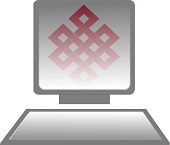Submissions
Submission Preparation Checklist
As part of the submission process, authors are required to check off their submission's compliance with all of the following items, and submissions may be returned to authors that do not adhere to these guidelines.- This contribution has never been published previously under any title, nor submitted for publication in any other academic or non-academic source.
-
The author(s) has read the pages on 'Publication fee', 'Recommendations for papers having two or more contributors', ‘Copyright Notice’, ‘Declaration on conflicting interest’ and ‘Policy of confidentiality and informed consent’.
- The contribution file is in the Microsoft Word or RTF format.
- Whenever possible, URLs are given in full. If convenient, please use an online URL shortening service.
- The line interval throughout the body text is set to 1.5; and in the abstract, keywords, notes, references, and author information, to 1,0. Throughout the text, only font size 14 is used. Emphasis is added by italics and notunderline. All tables, illustrations and graphs are within the body text, with an appropriate caption.
- The style of your contribution and the references correspond to the the requirements listed in the Author guidelines, located in the “About the journal” section of the site.
- If you are contributing to the peer-reviewed section of the journal, please check the requirements in the Blind peer-review section.
Encyclopedia of Tuvan culture
In this section, we will publish articles comprising results of research on contemporary Tuvan ethnic culture:
— conditions, factors and trends of the development of Tuvan ethnic culture as a whole and its particular traditions, rituals in their current state;
— scientific, social, political and other issues of studies on contemporary ethnic culture of the Tuvans;
— description and analysis of particular cultural traditions and rituals of the Tuvan people;
— description and analysis of a cultural tradition and a rite of a specific kin group of the Tuvans;
— new forms of modern Tuvan ethnic culture (which have emerged over the past twenty years);
— reflections of sociocultural changes of recent years in the Tuvan language;
— the role of personality in the current restoration, maintenance and development of Tuvan ethnic culture, etc.
The main research fields are the following: social anthropology, cultural anthropology, ethnography, cultural studies, history, sociology, political science, and philology.
The chronological scope is the 21st century (the 2000s — up to the present time).
Priority will be given to:
- a) articles containing new field materials with detailed descriptions, including videos, audio records, photos;
- b) articles with analysis based on new theoretical and methodological approaches of cultural anthropology.
NB! In order to submit an article to this section, authors should first send an abstract with an outline (1–2 pages) to discuss its content with the editorial board (editor@tuva.asia). Articles should not contain references to sources of funding.
Dialogue of cultures
This section invites articles on comparative Tuvan studies. Tuva and Tuvan ethnic culture form a part of Russia and its culture but nevertheless they also belong to the region of Siberia, Buddhist culture, Turkic-speaking world and of the unique cultures of Central Asia and the Sayan-Altai region.
Copyright Notice

Author(s) license holder(s) grant rights for their work to the journal (grantee of a license) under the simple non-exclusive open license in accordance with Art. 1286.1 «Open license for a research work, work of literature or fine arts», Civil Code of the Russian Federation.
New Research of Tuva publishes articles under the Creative Commons Attribution-NonCommercial license (CC BY-NC).
Since it is an open license, author(s) reserve the right to upload the article to their institutional repository, submit it to another journal (if it allows republications), or republish it on their own website (in full, or in part).
However, several conditions apply here:
a) The republished version must always contain the name(s) and affiliation(s) of the author(s), the original title and the hyperlink to the original version on the New Research of Tuva website;
b) It must be in open access, free of charge, and no category of readers must be in any way whatsoever advantaged over general readership.
c) should the contribution be submitted elsewhere by its author(s) without substantial modification (30% or more of original text unchanged), the body of the article should contain a disclaimer that the original version was published in New Research of Tuva (with a link to the respective page)
The CC-BY-NC is a non-revocable license which applies worldwide and lasts for the duration of the work’s copyright.
Privacy Statement

The names, email addresses and other personal data you provide on this website, will be used only in accordance with the purposes stated by the journal and under no circumstances will be passed on to third persons or organizations.
The article file and the article metadata page on the journal site will only contain the following information on the author(s):
- their name(s)
- their institutional affiliation(s)
- the authors' email(s)
Other data required by the system, such as the authors' work address or phone/fax number, are intended for communication purposes only and will not be displayed on the article metadata page on in the article file.




